How Politics Gutted Workplace Safety
In the 1980s, OSHA was forced to put business interests above worker protections. It’s still falling short.

Photo by William Thomas Cain/Getty Images
On May 28, 1971, exactly one month after opening its doors, the already reviled Occupational Safety and Health Administration handed out its first citation.
The citation went to Allied Chemical Corp., which had allowed highly toxic mercury to pool on floors and working surfaces at its chlorine plant in Moundsville, West Virginia. It was issued under the so-called general duty clause of the Occupational Safety and Health Act of 1970, which says that workplaces must be “free from recognized hazards that are causing or are likely to cause death or serious physical harm.”
Forty-four years and some 9 million violations later, health hazards such as mercury continue to plague America’s workers. OSHA has issued only 36 health standards and relies on mostly outdated exposure limits for the 470 substances it regulates; many more substances go unregulated. It rarely uses the general duty clause to cite alleged health violations, having concluded that the burden of proof is too steep. Hindered by court decisions, the White House, an often-hostile Congress, a weak underlying statute, and—some say —its own timidity, the agency is still searching for ways to protect workers from fumes, vapors, dusts, fibers, and liquids that can kill or incapacitate them.
While OSHA’s overall record on worker health is undistinguished, it has seen periods of productivity. The most notable came during the Carter administration in the late 1970s, when the agency rammed through standards for benzene, arsenic, lead, and other substances known to cause cancer, neurological problems, and other ailments. Unions were influential then, government employees motivated. “We had such loud, knowledgeable, vibrant voices,” said Eula Bingham, who ran OSHA from 1977 to 1981. “The time was right.”
The momentum died when Ronald Reagan defeated Jimmy Carter in the 1980 presidential election. Bingham was replaced by Thorne Auchter, a construction company executive who, like Reagan, argued that overregulation was hurting American enterprise and set OSHA on a more conciliatory course.
Reagan insisted that “we can relieve labor and business of burdensome, unnecessary regulations and still maintain high standards of environmental and occupational safety.” But many believe OSHA never recovered from the change in administrations.
“We were a cadre of people who were really serious,” said Nicholas Ashford, a professor of technology and policy at the Massachusetts Institute of Technology who chaired the National Advisory Committee on Occupational Safety and Health while Bingham was in office. “If we had had four more years, we would have really, really protected the American public from a variety of hazards.”
The following account is based on interviews with scores of current and former government officials—including OSHA leaders spanning administrations from Richard Nixon to George W. Bush—and others in the fields of medicine, law, labor, industry, and science, as well as thousands of documents from the National Archives at College Park, Maryland; the Reagan and Nixon presidential libraries in California; and private collections.
“Gestapo”
A division of the U.S. Department of Labor, OSHA faced an uphill battle from the day it opened its doors in April 1971. Business owners and lawmakers bemoaned and belittled it. Its inspectors elicited oddly visceral reactions; references to Adolf Hitler and the Gestapo became too numerous to count. In a handwritten note to Nixon in October 1971, a self-described “lifelong conservative Republican and … Nixon booster” from Ann Arbor, Michigan, wrote that if the president had played any role in OSHA’s creation, “you should be thrown out of office at once.”
In fact, Nixon had played a major role. In a message to Congress in August 1969, he observed that technological progress could be a “mixed blessing. The same new method or new product which improves our lives can also be the source of unpleasantness and pain.”
At the time, 14,000 workers were dying of traumatic injury each year, and many thousands more were being hurt or sickened. While the occasional factory or mine disaster made headlines, “most dangers are realized under less dramatic circumstances,” Nixon said. “Often, for example, a threat to good health will build up slowly over a period of many years. To such situations, the public gives very little attention. Yet the cumulative extent of such losses is great.” Nixon had been influenced as vice president in the 1950s by James Mitchell, Dwight D. Eisenhower’s labor secretary; known as the “social conscience” of the Republican Party, Mitchell had shepherded a maritime safety bill through Congress but had wanted to do more. Legislation submitted by Nixon’s predecessor in the White House, Lyndon Johnson, had failed.
For 16 months following Nixon’s appeal to Congress, Republicans and Democrats haggled over a bill that would spawn a federal worker health and safety policing agency to replace anemic, corruptible state programs. Hearings were held on what former Labor Secretary George Shultz, who’d moved over to the White House’s Office of Management and Budget, called the “grim current scene.”
An October 1970 report from Democratic members of the Senate Committee on Labor and Public Welfare noted that “substantial numbers [of workers], even today, fall victim to ancient industrial poisons such as lead and mercury.” Moreover, “new materials and processes are being introduced into industry at a much faster rate than the present meager resources of occupational health can keep up with.”
Nixon signed the Occupational Safety and Health Act into law on Dec. 29, 1970, calling it “probably one of the most important pieces of legislation … ever passed by the Congress of the United States.”
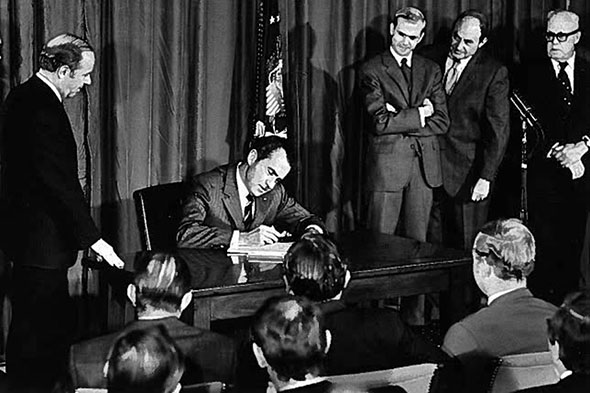
Courtesy of the Department of Labor
At the time, Democrats controlled both houses of Congress; the vote in the Senate was 83 to 4, in the House 310 to 58. The act, a compromise between bills introduced by Sen. Harrison Williams, a New Jersey Democrat, and Rep. William Steiger, a Wisconsin Republican, included a catchall clause that held employers responsible for providing safe environments—recognition, as the 1970 committee report put it, that “precise standards to cover every conceivable situation will not always exist.”
George Guenther, the former president of a hosiery factory in Reading, Pennsylvania, and a former official in that state’s and the federal labor departments, was tapped to lead the new regulatory agency. Resistance was fierce from the beginning.
One writer from Seattle complained in a letter to the White House of “un-American” and “ludicrous” regulations covering subjects such as worksite privies. Members of a bricklayers’ local in Iowa lamented the “assinine” [sic] requirement that they wear hard hats, saying “the only danger of injury to our heads is the falling of the sky and an occasional low flying bird.”
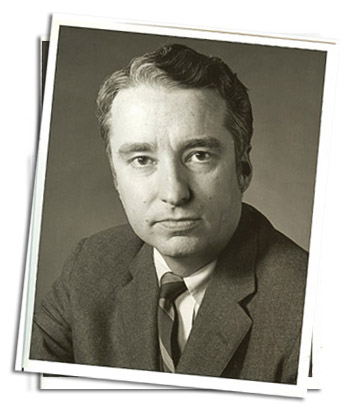
George Guenther. Photo courtesy of the Department of Labor.
OSHA was not without support. In a letter to the secretary of health, education and welfare, a worker at a General Tire & Rubber plant in North Carolina said some of his fellow employees were “subjected to so much carbon dust that they have to use liquid detergent to cleanse their skin, not to mention the black carbon coughed up.” A worker at a Hughes Aircraft factory in Tucson, Arizona, asked the secretary of labor to investigate noxious fumes he believed had ruined his health.
The negative responses fielded in Washington, however, far exceeded the positive; members of Congress from conservative states like Wyoming and Nebraska seethed. Guenther championed his battered agency at a White House conference in February 1972, saying it had targeted for special action five toxic substances—asbestos, lead, silica, cotton dust, and carbon monoxide—and adopted a “broad set of initial standards” that were under constant review. If OSHA continued “on the path we have established,” he said, “I believe in 1990 we will be able to look back on the toll of workplace injury and illness as a thing of the past in much the same way we can now look back on polio and tuberculosis.”
Guenther, who was way off on his prediction, left the agency in early 1973. It later came out at the Watergate hearings that he’d written a memorandum discussing “the great potential of OSHA as a sales point” to win business support for Nixon’s 1972 re-election campaign. Some saw this as a craven offer to go easy on industry in exchange for political favors. Guenther had also suggested in the memo that the agency not propose any controversial standards in the short term.
In one of his final acts as president, Nixon decreed that environmental and safety rules under consideration be screened to ensure that the nation’s economic goals were not being “unduly sacrificed.” His successor, Gerald Ford, continued the policy. “Inflationary impact statements” became a sore point for union leaders. In a letter to Labor Secretary William Usery in September 1976, AFL-CIO President George Meany charged that the statements were a “macabre charade” that led to insufferable delays, and “a means of providing business management with a sounding board to set forth exaggerated claims” about the costs of complying with new rules.
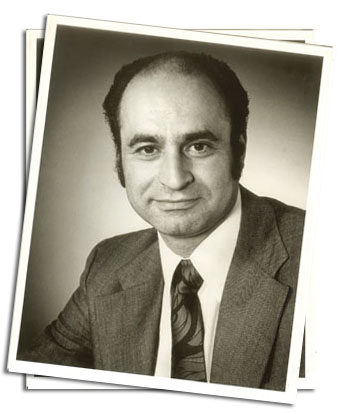
Morton Corn. Photo courtesy of the Department of Labor.
The issue became moot when Ford lost to Jimmy Carter in November 1976. In a parting memo, the head of OSHA under Ford, Morton Corn, defended his tenure, saying he’d emphasized health and implemented a team approach to standard-setting, bringing together Labor Department lawyers and scientists at the start of the process rather than the end to move things along. “I estimate,” Corn wrote, “that a productivity rate of 15 to 20 health standards promulgated per year is a noble ambition in 1978 or 1979.”
In a recent interview, Corn said: “I was an optimist.”
Turning Over Rocks
In early 1977, Eula Bingham, a Kentucky-born environmental health researcher at the University of Cincinnati, got an unexpected call from the Carter transition team. Would she take over for Corn? “I laughed at them,” Bingham said. “I said, ‘I couldn’t do that; I’ve got children.’ I was divorced.” The new labor secretary, University of Texas economist Ray Marshall, talked her into it.
Bingham knew from her own work in Cincinnati that she would be besieged by requests for help from unions, like the Oil, Chemical, and Atomic Workers; the United Steelworkers; and the United Auto Workers, whose members were succumbing to chemical exposures in alarming numbers. “We were turning over rocks all the time,” she said. “Here would be a horrible disease, or people literally falling over. The five years before I went to OSHA, it was just zip, zip, zip, zip, zip. There was so much going on.”
OSHA had issued its first health standard, for asbestos, in 1972. In 1974 it regulated a group of 14 carcinogens—among them beta-naphthylamine, a pernicious chemical used in dyes—after litigation by the OCAW and Ralph Nader’s Public Citizen Health Research Group. The following year, responding to a cluster of rare liver cancers among workers at a BF Goodrich plant in Louisville, Kentucky, the agency moved quickly to reduce its exposure limit for vinyl chloride—used to make PVC plastic—by a factor of 500.
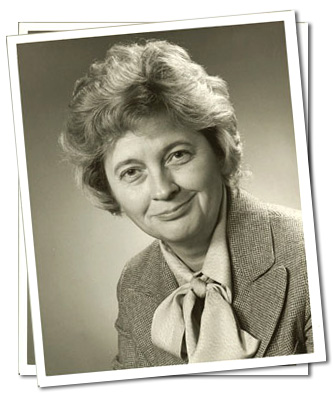
Eula Bingham. Photo courtesy of the Department of Labor.
Bingham picked up the pace. She and Marshall won swift praise when they announced they were scrapping about 1,100 rules that had no real effect on worker health or safety—specifications for toilet seats, prescribed heights for fire extinguisher mounts—so inspectors could concentrate on more important matters. “We’re going to get tough on the health hazards in the workplace that cause irreversible injury,” Bingham told U.S. News & World Report. The magazine quoted the head of a group called Stop OSHA as saying that Bingham, like Corn, would be “eaten alive.”
For the most part, Bingham kept her word. In 1978 alone OSHA put out standards on benzene, arsenic, lead, cotton dust, the pesticide DBCP, and acrylonitrile, a flammable liquid used in plastics. It developed a generic policy that would require employers to set “lowest feasible” exposure limits for known or probable carcinogens identified by either human or animal evidence. The idea was to avoid the drawn-out, substance-by-substance vetting process; Steelworkers representative Daniel Hannan testified at an OSHA hearing that in the 5½ years it had taken the agency to adopt a standard for coke oven emissions, as many as 1,440 workers who operated the big, sooty ovens may have developed fatal diseases. “It has been a long and sad history, and we feel there has to be a faster and better way,” Hannan said.
Industry was knocked back on its heels. Trade groups like the American Iron and Steel Institute said the cancer policy could impose costs of more than $1 billion a year on businesses and urged OSHA to do a risk-benefit analysis. The policy “is characterized by a pervasive inflexibility that takes no account of variations in the properties of different chemical substances, in the production processes involved, or in the characteristics of the industries that produce or use the chemicals,” the institute said.
It was “the same kind of crap” that had been used to try to derail the coke oven standard and others, Steelworkers staffer Mike Wright, now the union’s health, safety, and environment director, complained in a July 1978 memo. Wright worried that White House economic advisers would try to “gut” the policy.
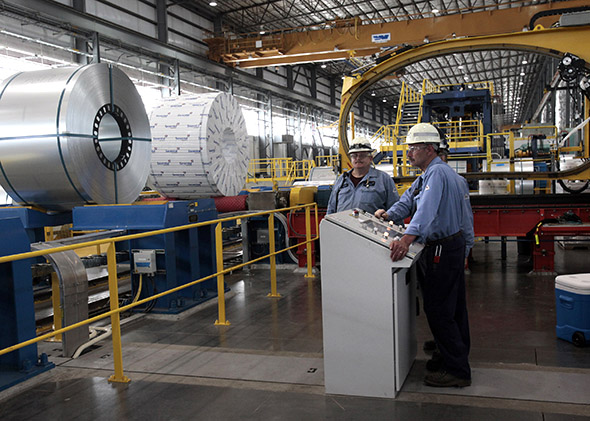
Photo by Rebecca Cook/Reuters
His was not an unreasonable fear. Seven months into the Carter administration, news outlets reported that a White House task force had recommended replacing most OSHA regulations with economic incentives for employers. The idea was abandoned after union leaders complained bitterly. “This proposal essentially entails the placing of a price tag on a worker’s life,” OCAW President A.F. Grospiron wrote to Marshall.
In most cases, Carter himself proved to be a supporter of worker health regulations. The textile industry, for example, opposed OSHA’s plan to crack down on cotton dust, which caused an often-lethal respiratory disease called byssinosis—brown lung. Bingham had met with victims and been moved by their plight. “The head of the group said, ‘Would you mind if we started with a prayer?’ and I said, ‘No, sir,’ and all during that prayer I could hear that [wheezing],” Bingham recalled, imitating the sound.
Under a court-imposed deadline, OSHA was preparing to issue a cotton dust standard in 1978 when Bingham and Marshall were summoned to the White House to discuss a potential snag—a claim by a textile industry official that the rule would bankrupt the industry. Bingham said she was prepared to quit if Carter insisted that the standard be watered down. Instead, he suggested something “stronger than what we had asked for. It was a shockeroo.” The final standard came out on June 23 of that year.
Carter was unhelpful, though, when it came to beryllium, a superlight, lung-damaging metal used in weapons production. Marshall sought the president’s blessing of a muscled-up beryllium standard but was outmaneuvered by the secretaries of energy and defense, who argued that the substance was vital for national security. Carter said no to a new rule; more than three decades later the old one, dating to the late 1940s, is still in place.
With a boost in funding from Congress, Bingham launched a grant program for health and safety training called New Directions; the money went to unions and regional worker advocacy groups. She commissioned and distributed edgy films such as Can’t Take No More, which featured blue-collar workers describing some of the horrific conditions they endured.
Work-related disease took prominence. Bingham and the heads of the Environmental Protection Agency, the Food and Drug Administration, and the Consumer Product Safety Commission met regularly to discuss ways to regulate toxic chemicals. A 1978 paper by the National Cancer Institute, the National Institute of Environmental Health Sciences, and the National Institute for Occupational Safety and Health estimated that at least 20 percent of all cancers in America were occupational in nature; previous estimates had been as low as 1 percent.
A Labor Department brochure announcing a 1979 seminar in Chicago decried the “massive yet silent slaughter” of “at least 100,000 Americans” per year from exposure to chemicals on the job. The florid language peeved John Danforth, then a Republican senator from Missouri, who complained in a letter to Marshall that “this kind of rhetoric fails to serve any constructive purpose, and can only strain the relationship between business and government.”
Getting Government “Off Our Backs”
On election eve, Nov. 3, 1980, Reagan gave a preview of what his administration would look like if he ascended to the White House. He would bring about “reforms that will get government off our backs, out of our pockets, and up to the standards of decency and excellence envisioned by the founding fathers.”
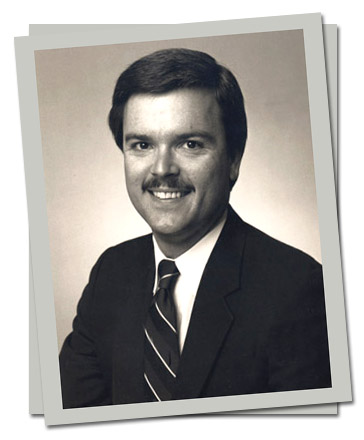
Thorne Auchter. Photo courtesy of the Department of Labor.
The following month, Democratic Rep. Charles Bennett, dean of the Florida delegation, recommended to the president-elect a replacement for Bingham: Thorne Auchter, who owned a construction company in Jacksonville, Florida. Bennett described Auchter as a “truly exceptional individual ... the kind of young, articulate, attractive person that would be a real asset to any administration.” Auchter’s curriculum vitae offered a more precise picture. “At age 28 organized the lobbying effort which killed the adoption of the Occupational Safety and Health Act by the State of Florida,” read the first item under “successful accomplishments.”
Nine days into his term, Reagan ordered a freeze on “midnight regulations” issued by the Carter administration in its waning days. Bingham’s generic cancer policy was one of them; it never went forward. Another was a rule mandating that workers receive written information about the chemicals they encountered—the hazard communication standard. (The standard was reissued by OSHA in 1983 after industry leaders complained that states were filling the void by passing their own rules; some went beyond what the federal government had planned to do.)
A review of the cotton dust standard, in particular, drew the ire of labor and triggered a vigil on behalf of brown lung victims in Washington. Murray Finley, president of the Amalgamated Clothing and Textile Workers Union, accused the administration of being “determined to find a basis for tearing out the heart of the standard.”
Reagan followed up the rule freeze with an executive order requiring agencies to seriously ponder the costs of all proposed regulations. Any rule that went forward would have to be reviewed and approved by the Office of Management and Budget.
Auchter, for his part, set about changing OSHA’s tenor. He suspended distribution of the Bingham films, which he deemed inflammatory, and ordered the withdrawal of a brochure whose cover included a poignant photo of a brown lung victim.
He denied a petition from Nader’s Health Research Group and the American Federation of State, County, and Municipal Employees seeking an emergency temporary standard for ethylene oxide, a carcinogenic gas mainly used by health care workers to sterilize instruments. In a letter to Health Research Group director Sidney Wolfe, Auchter said there was no evidence that ethylene oxide posed a “grave danger” to workers. A federal judge later upbraided OSHA for failing to act, saying it had made “a clear error of judgment” that put some 140,000 workers at risk.
Now retired in north Georgia, Auchter said in an interview that he sought to bring management rigor to an agency that “had a lousy reputation in the business community from which I came as being arbitrary, capricious, and overbearing.” He had his staff use injury and illness data to target high-hazard industries; injuries leading to days away from work decreased. He created a voluntary program—criticized by government auditors many years later—that exempted supposedly safety-conscious companies from routine inspections. “My feeling is that the government should regulate as little as possible,” Auchter said.
This hands-off approach won fans in the business community. OSHA’s enforcement staff was cut 22 percent during Auchter’s tenure; the inspectors who remained were “to give appropriate attention to matters of dress, conduct and comportment and to use the time of employers and employees wisely,” Auchter said in congressional testimony.
In a January 1982 report, the Chemical Manufacturers Association’s Occupational Safety and Health Committee offered a glowing appraisal of the new regime. “We have a unique opportunity here to revise and put in place some rules and regulations that we can live with rather than coast these [next] three years only to be blitzed vindictively again in the future,” the committee said.
Some within the agency, however, were deflated. One of Auchter’s underlings tried to fire Peter Infante, then head of OSHA’s Office of Carcinogen Identification and Classification, in 1981 after Infante testified before the Consumer Product Safety Commission, and wrote on agency letterhead to a branch of the World Health Organization, that formaldehyde caused cancer in animals, a position contrary to the administration’s. The Formaldehyde Institute, a trade group, had taken umbrage; a letter from one of its lawyers was attached to the notice of dismissal. Infante kept his job after then-Rep. Al Gore held hearings on the episode, calling it “a blatant attempt to rid the government of a competent scientist who happened not to agree with an industry whose profits are at stake.”
Infante, who left OSHA in 2002 and consults for plaintiffs in toxic-tort litigation, described Auchter as “totally anti-worker. The only thing he wanted to do was pull back standards and make sure no new standards got out.”

Photo by Chris Keane/Reuters
Elisa Braver, an epidemiologist who worked for Infante, said the agency’s health staff was “extremely demoralized” during the Auchter era. People who’d logged “crazy, crazy hours” under Bingham suddenly found themselves with not enough to do, said Braver, who left OSHA in 1984 and works for the National Transportation Safety Board. “I got quite depressed seeing what was happening.”
Auchter appears to have few regrets about his three-year stint at OSHA. Asked if the death of his son in a construction accident in 2000 had changed his thinking on workplace regulation, he answered, “No. No. No.”
Auchter did admit to one frustration: the length of time it took to set health standards, three of which came out on his watch. “I felt we improved every function of the agency except for the rulemaking process,” he said. “I spent a lot of time searching for some approach, some group of experts who could say, ‘Here’s a way you could improve it.’ I’ve not found anybody. I don’t know how to fix that.
“If I were sitting in the chair today, the first thing I’d say is, ‘It’s pretty clear we’re not gonna regulate 80,000 chemicals,’ ” Auchter said. “Good golly, I just think there ought to be a better way to do this.”
A Courtroom Loss, Little Progress Since
In January 1989, OSHA made an audacious play: It set or tightened 376 chemical exposure limits in a single rule, a move the agency estimated would eliminate 55,000 work-related diseases and 683 deaths each year, at an annual cost of $150 per worker and $6,000 per affected plant—“a fraction of 1% of the sales for all affected industry sectors.”
Legal challenges by both industry and labor—the former thought some of the exposure limits too strict, the latter too lenient—led to a crushing loss three years later. The 11th Circuit Court of Appeals vacated all 376 new limits, saying OSHA had failed to demonstrate significant risks existed under the old ones.
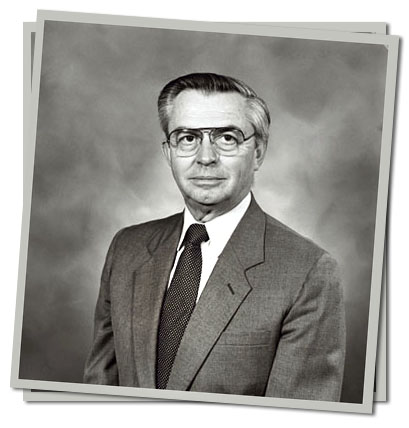
John Pendergrass. Photo courtesy of the Department of Labor.
Reagan OSHA appointee John Pendergrass was behind the 1989 effort. “Rather than cherry-pick, which had been done over the years, I naively said, ‘Let’s do it all at one time,’ ” Pendergrass said from his home in Mobile, Alabama. “The court just shot down the whole thing. Frankly, it was a big disappointment. I don’t think it was good for the workers.” The 11th Circuit denied the Labor Department’s request for rehearing, and department lawyers decided not to petition the U.S. Supreme Court for review.
In the 1990s OSHA managed to issue 11 standards for substances such as methylene chloride, a solvent that attacks the central nervous system and is a possible carcinogen. It identified 60 other “priority substances” in need of further investigation; the list was trimmed to 20, then seven. Among the seven were manganese, a metal linked to neurological disorders, and glutaraldehyde, a medical sterilizing agent tied to asthma.
Mindful of the 11th Circuit decision, OSHA spent several years delving into the risks these substances posed and whether it was feasible for industry to control exposures. In the end, no standard was proposed.
OSHA spent a good deal of the 1990s working on a standard designed to reduce crippling musculoskeletal injuries from repetitive-motion work, such as meatpacking and sewing. The ergonomics rule, issued in final form in November 2000, would have offered protection to more than 100 million workers, OSHA said. But a Republican Congress, taking its cue from the newly elected president, George W. Bush, and trade groups like the U.S. Chamber of Commerce, voted to repeal it. Bush called the rule “unduly burdensome and overly broad” and said it could cost employers billions of dollars.
In the 14-plus years since the ergonomics rule was thrown out, OSHA has put out only two health standards—one on hexavalent chromium, a metal that causes lung cancer, and another reflecting an update of the hazard communication standard, which requires that workers be informed about chemicals they’re using. The chromium standard was issued under court order; by OSHA’s own calculation, it is so lame that exposed workers still face greatly elevated cancer risks.
As the Obama administration winds down, OSHA is trying to finish a standard for silica, a component of rock and sand that can cause the fatal lung disease silicosis as well as lung cancer and kidney disease. The need for such a standard was noted by the National Institute for Occupational Safety and Health more than 40 years ago.
“The Current Paradigm”
In October 2013, OSHA issued an extraordinary press release saying that its exposure limits were “not adequately protective” and that employers should consider adhering, voluntarily, to stricter ones recommended by NIOSH or enforced by the state of California. It’s hard to imagine another regulatory agency admitting failure in such a public manner.
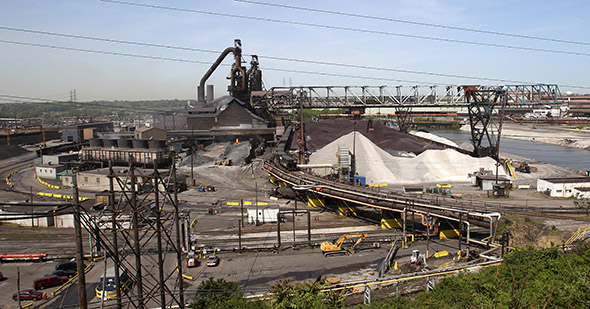
Photo by Aaron Josefczyk/Reuters
This is not to say that OSHA has given up. Last year it put out a “request for information”—an appeal to the public for suggestions on how to fix the broken standard-setting process. One is to regulate chemicals by category instead of individually, said David Michaels, the agency’s chief: “Let’s not worry so much about what the safe level is but say, ‘If you have a chemical in this category, here are all the things you have to do to make sure workers are protected.’ ”
“We’re going to come up with some ideas,” Michaels said. Most of them, however, probably “won’t be things we can do through regulation but we’ll need to do through legislation.”
This seems an unpromising route. “We’re going to see more timely standard-setting when Congress and the White House are more concerned with worker safety,” said Michael Silverstein, who was OSHA’s policy director for two years of the Clinton administration. “The politics are pretty grim at the moment.”
Some wonder if the agency has been paralyzed by self-doubt, seeing hurdles where they don’t exist.
In 1980, OSHA was stung by a Supreme Court ruling that overturned its benzene standard, saying the agency hadn’t demonstrated “significant risk.” The following year, however, the court upheld the cotton dust rule after an industry challenge and made it clear that OSHA could not do a cost-benefit analysis—in effect, pricing out a worker’s life—before issuing a health standard.
And yet OSHA—which, by law, does have to demonstrate that a proposed rule is feasible—has continued to perform “de facto cost-benefit analyses,” said Eric Frumin, the former health and safety director for the Amalgamated Clothing and Textile Workers Union, now with the labor consortium Change to Win. “It’s an intellectual corruption of the [1970] act, and it’s a tremendous waste of resources.”
Chuck Gordon, a lawyer in the Labor Department’s Office of the Solicitor from 1975 to 2008, agreed that OSHA “does more analysis than it needs to. It takes too many internal steps, does too many internal reviews, writes too many long documents.”
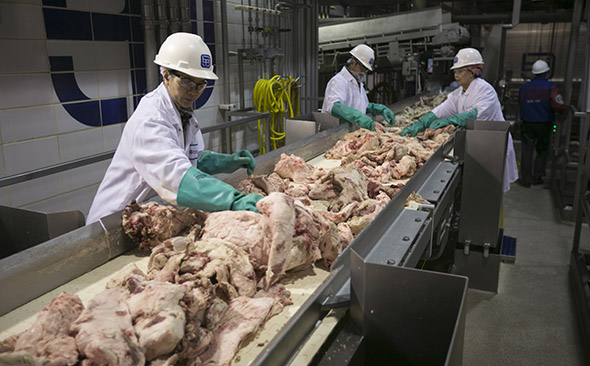
Photo by Lane Hickenbottom/Reuters
Gordon believes OSHA could stand up more forcefully to the Office of Management and Budget. “I was at meetings with them on benzene, cotton dust, and other standards,” he said. “We had to give in on some things but in all cases maintained the integrity of the standard.” In congressional testimony in 1981, the U.S. Chamber of Commerce had made a case for strong OMB review, saying employers were “sometimes compelled by OSHA to expend much of their time, effort and safety and health dollars abating what is, in fact, a non-hazard.”
Asked to respond to criticisms of its fortitude, OSHA said in a statement that it “promulgates standards that comply with its statutory mandate. As well as the OSH Act, this includes the Paperwork Reduction Act, the Regulatory Flexibility Act and others. OSHA works closely with OMB and in accordance with laws, executive orders and legal precedents to issue standards that protect workers.”
Lawyer and former OCAW official Steve Wodka maintains that OSHA could make more frequent use of the law’s general duty clause—invoked in citation No. 1 against Allied Chemical for the pooled mercury—to punish employers that fail to control chemical hazards. Michaels himself had endorsed the idea in congressional testimony in 2007, when he was a professor at George Washington University.
Wodka, who, with his firebrand boss, Tony Mazzocchi, filed a complaint against Allied on behalf of the union, said that he and others who helped draft the act assumed OSHA wouldn’t be able to knock out many individual health standards. The law “was set up so that there would be no gaps in coverage,” he said. “It became a huge battle that runs right up to today. OSHA takes a few steps out to cite someone under [the general duty clause] and this uproar occurs.”
OSHA said it used the clause about a dozen times from 2011 to 2014 to cite violations involving airborne chemical exposures. A “very high evidentiary burden” kept it from doing so more often, the agency said in a statement. For each violation it wants to issue under the clause, OSHA has to find that the hazard can cause death or serious harm, that workers are exposed, that the hazard is recognized by the employer or the industry, and that a feasible fix exists. Moreover, there can’t be a related standard on the books.
As experts inside and outside of OSHA debate the best way forward in what seems a hopeless situation, Raphael Metzger, a lawyer in Long Beach, California, is doing brisk business.
For the past 25 years, Metzger has devoted his practice to representing workers afflicted by toxic exposures. He estimates that he’s had about 1,000 such clients, among them a young man who developed myelodysplastic syndrome—also known as pre-leukemia—after being splashed with benzene-tainted fuel on a floating dock, and a middle-age golf club maker who needed a double lung transplant after inhaling beryllium, the metal OSHA declined to regulate in the 1970s.
“These are all people who are just trying to make a living and they get horribly, horribly sick at work,” Metzger said. “Basically, we have a legal structure that allows workers to be exposed to chemicals that cause cancer and other diseases. That is accepted. That’s the current paradigm.”
This story was published by the Center for Public Integrity, a nonprofit, nonpartisan investigative news organization in Washington. It is part of a series examining the epidemic of work-related disease in America. The first and second parts ran last week. For more on its investigation, follow the Center for Public Integrity on Twitter and join the conversation on its Worker Safety Facebook group.
